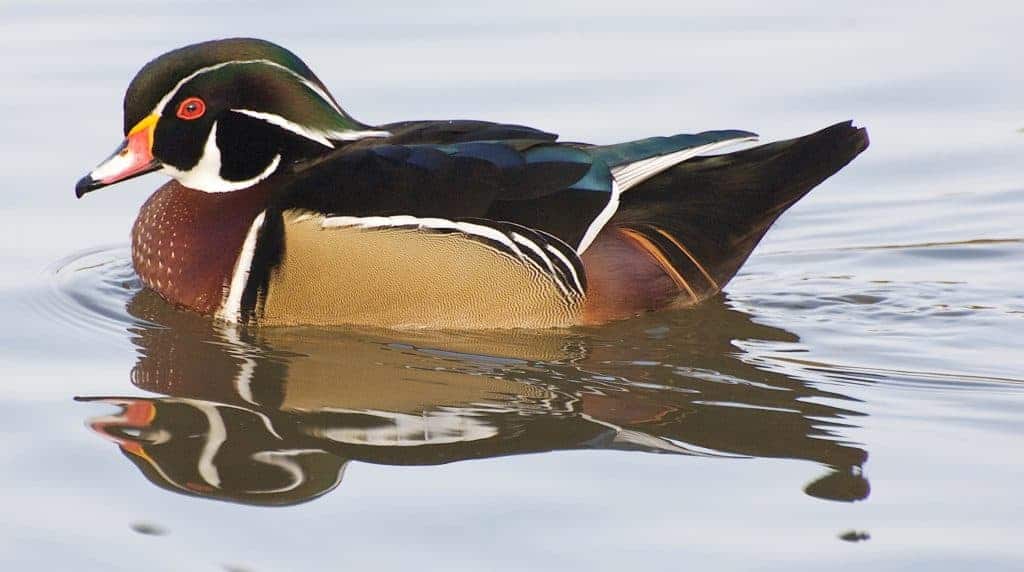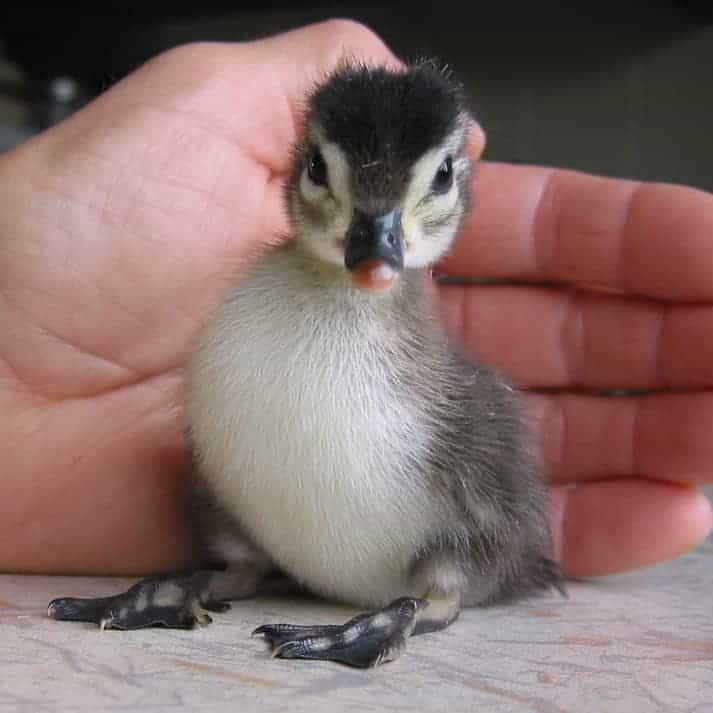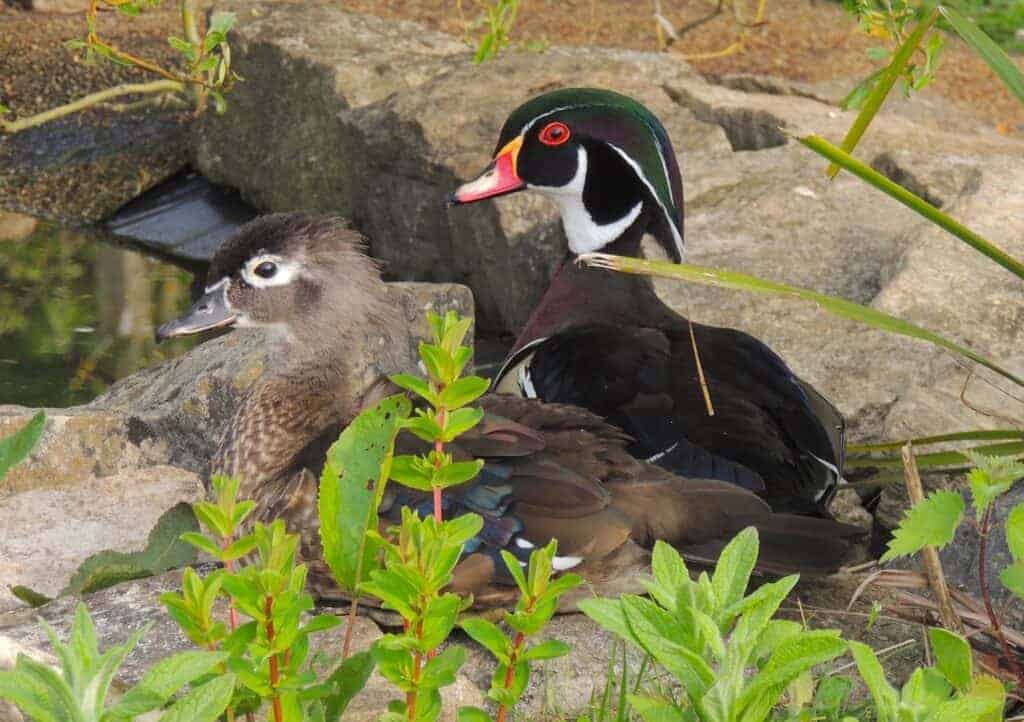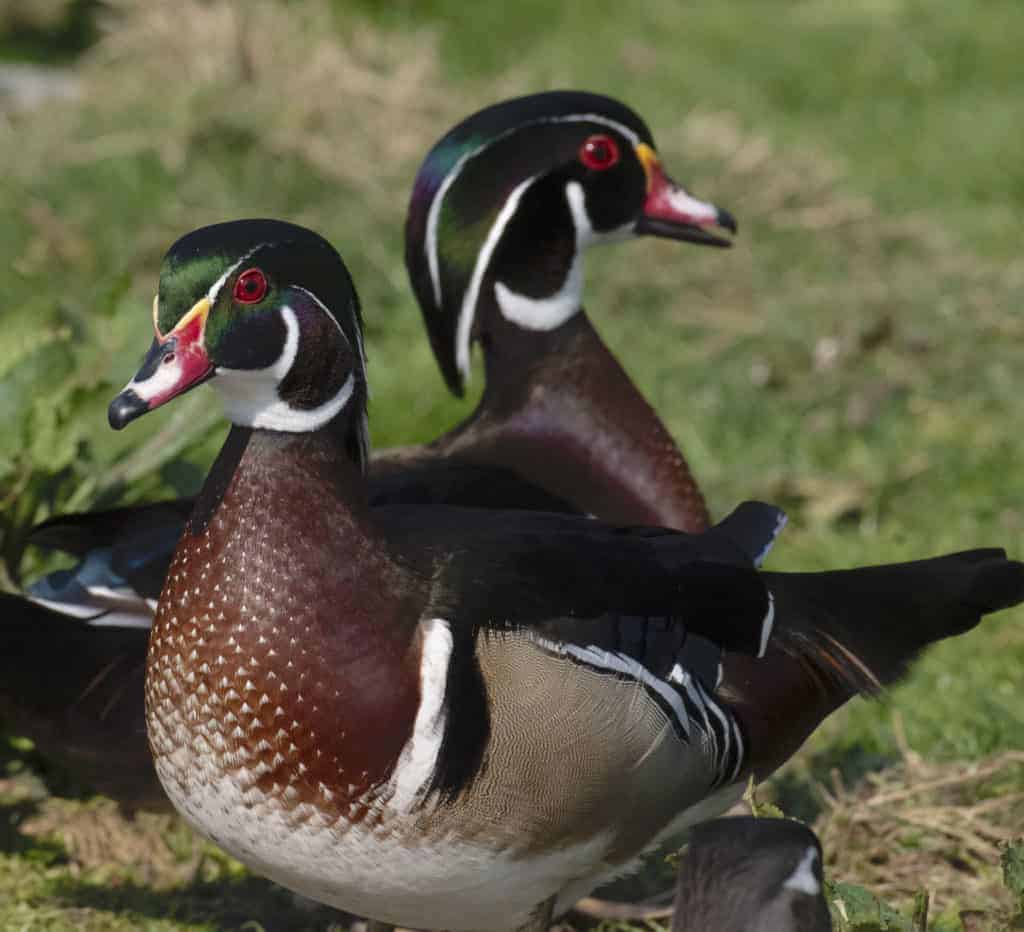Wood Duck


Overhunting caused the wild population of Wood Ducks to decline in the early 20th century, but their numbers recovered almost 70 years after closed hunting seasons were initiated in 1916.
Aix sponsa
Also known as Carolinas or North American Wood Duck, these colourful ducks are among the most popular wildfowl in collections throughout the world. Equally as ornate as the Mandarin, the drake has distinctive green, blue and violet hues on the head, crest and upper body contrasting with buff sides and chestnut chest and rump.
The Wood Duck has a range of calls; the drake being relatively silent save for a quiet ‘tsseeep’ but the duck sometimes makes a squealing call. They tend to perch on stumps and tree branches, with preferred habitats of shallow water and deciduous woodland.

The female Wood Duck is very similar in appearance to the Mandarin Duck. The best way to tell them apart is by the wider white ring around the eye. The tails of Wood Ducks are also squarer than those of Mandarin.
Wood ducklings can sometimes be a challenge to start feeding if hatched in an incubator. Movement will attract their attention, so water dripping on pebbles or a few crumbs dropped on their backs may help. Experienced breeders will often use a ‘jockey’, another duckling of similar size, to help show them what needs to be done.

Wood Ducks breed very slightly earlier than Mandarin, nesting in tree hollows (or raised boxes in captivity). They lay clutches of 9-14 eggs which are incubated by the female for 28-30 days. If a clutch is lost, Wood Ducks will usually re-nest.